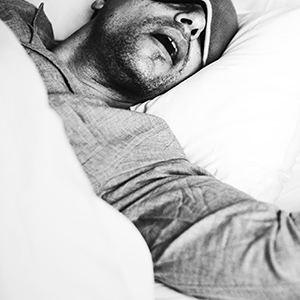Diagnostic accuracy and feasibility of portable sleep monitoring in patients with obstructive sleep apnea: Re-exploring the utility in the current COVID-19 pandemic

All claims expressed in this article are solely those of the authors and do not necessarily represent those of their affiliated organizations, or those of the publisher, the editors and the reviewers. Any product that may be evaluated in this article or claim that may be made by its manufacturer is not guaranteed or endorsed by the publisher.
Authors
Portable sleep monitoring (PSM) is a promising alternative diagnostic tool for Obstructive Sleep Apnea (OSA) especially in high burden resource limited settings. We aimed to determine the diagnostic accuracy and feasibility of PSM device-based studies in patients presenting for evaluation of OSA at a tertiary care hospital in North-India. PSM studies (using a Type-III PSM device) were compared for technical reliability and diagnostic accuracy with the standard laboratory-based Type-I polysomnography (PSG). Patients were also interviewed about their experience on undergoing an unsupervised PSM studies. Fifty patients (68% males) were enrolled in the study, of which only 30% patients expressed their concerns about undergoing unsupervised PSM studies which included safety issues, ease of use, diagnostic accuracy, etc. Technical acceptability criteria were easily met by the PSM studies with signal loss in 12% studies (complete data loss and inaccessible data in 6% studies), warranting repetition sleep studies in four patients. The overall sensitivity of PSM device (AHI ≥5) was 93.5% (area under curve; AUC: 0.87). The diagnostic accuracy was 68.5%, 80%, and 91.4% for mild, moderate, and severe cases of OSA, respectively. An overall strong correlation was observed between PSM-AHI (apnoea-hypopnoea index) and PSG (r>0.85, p≤0.001), especially in severe OSA. The observed sensitivity was >90% for AHI>20 (clinically significant OSA), with high specificity of 91% for severe OSA (AUC: 0.94, 0.97 for AHI>20, AHI>30 respectively). The overall Bland-Altman concordance analysis also demonstrated only a small dispersion for PSM studies with a Cronbach’s coefficient of 0.95. Therefore, there is good diagnostic accuracy as well as feasibility of home-based portable sleep studies in Indian patients. It can be promoted for widespread use in high burden countries like India for diagnosing and managing appropriately selected stable patients with high clinical probability of OSA, especially during the ongoing crises of COVID-19 pandemic.
How to Cite

This work is licensed under a Creative Commons Attribution-NonCommercial 4.0 International License.






